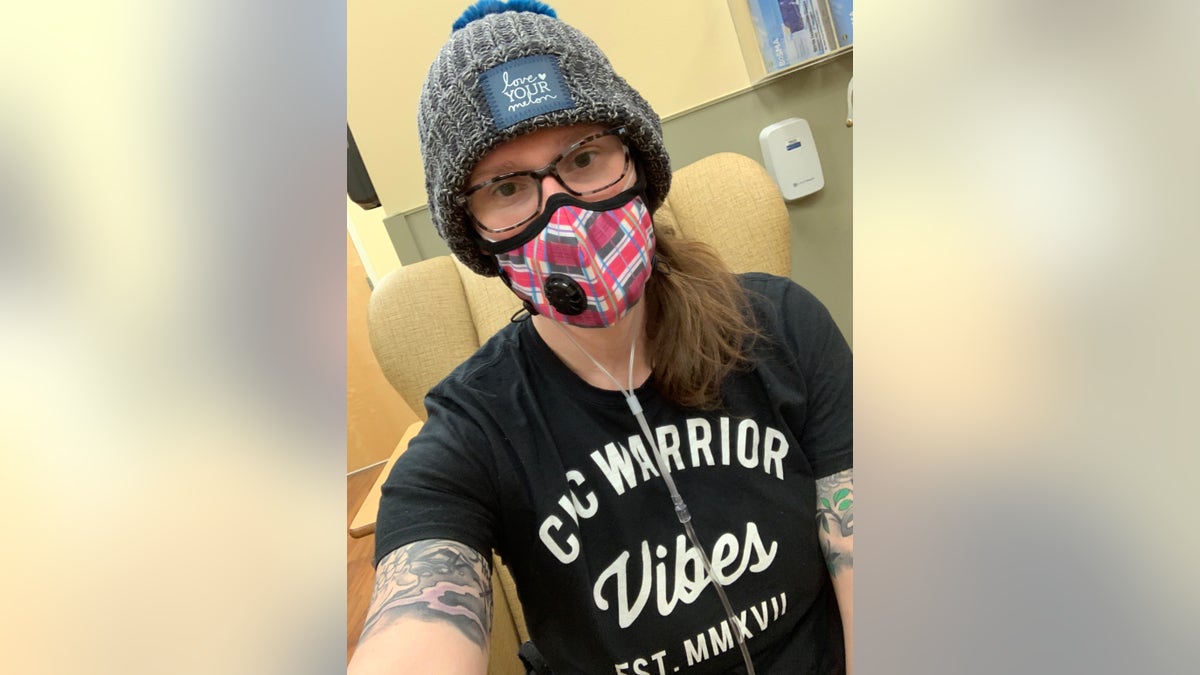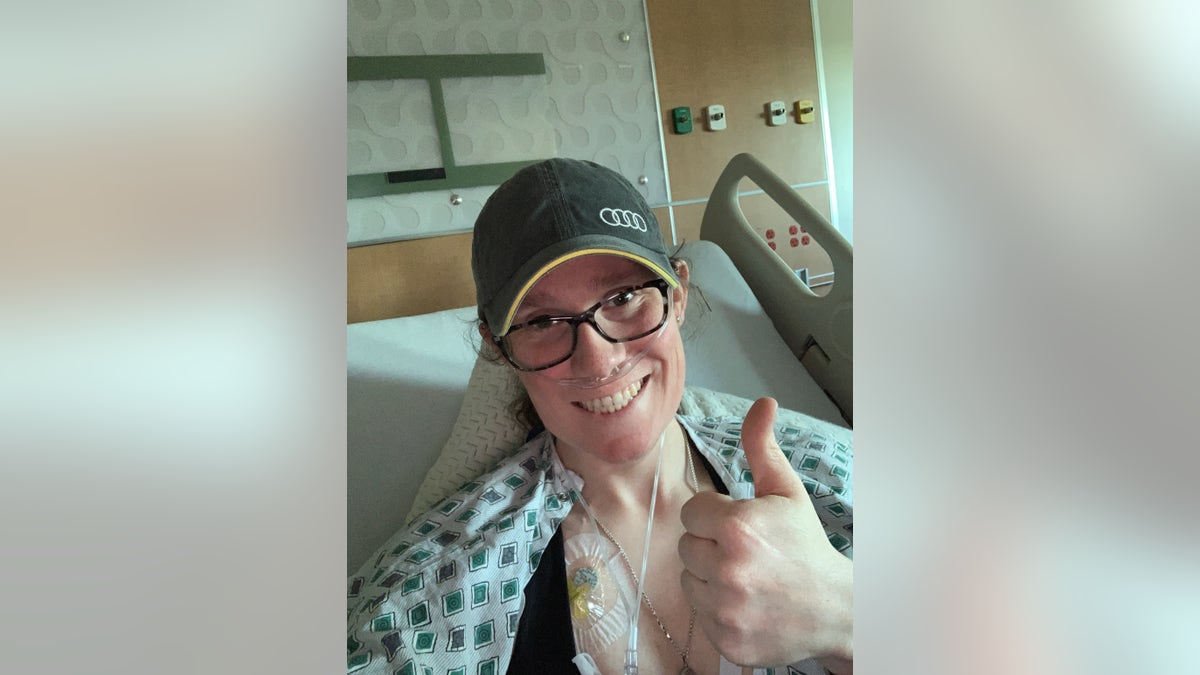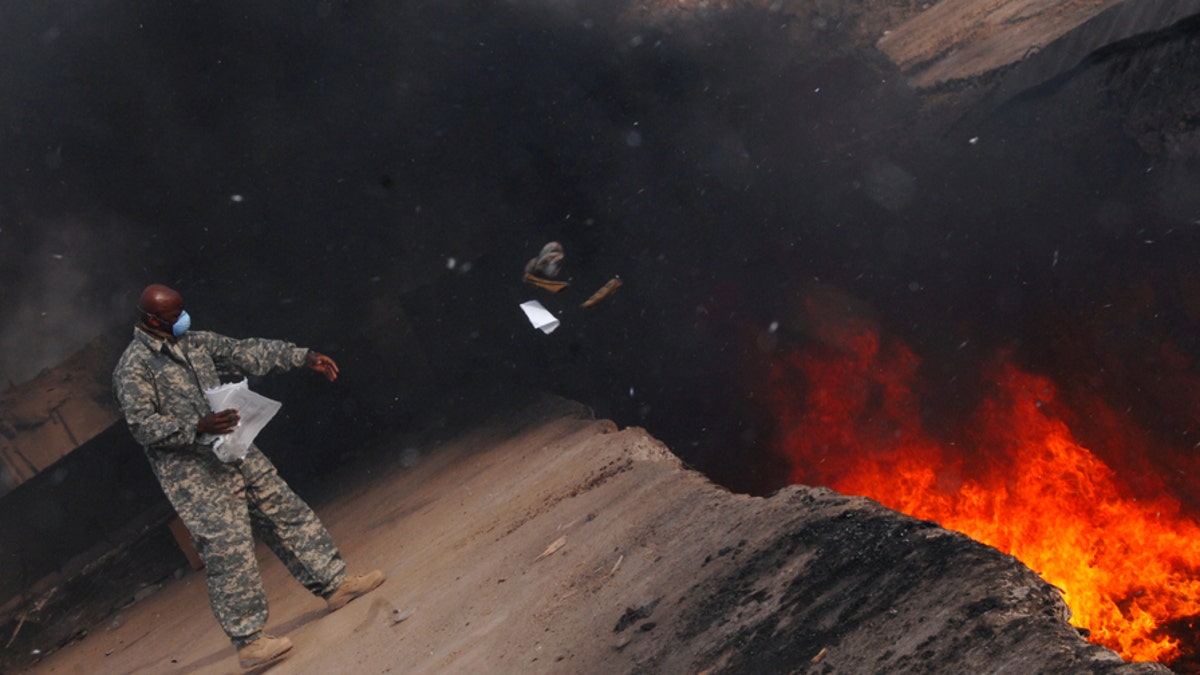US states move to expand coronavirus testing capabilities
Dr. Janette Nesheiwat joins Jon Scott with insight.
Get all the latest news on coronavirus and more delivered daily to your inbox. Sign up here.
For veteran Megan Kingston, the coronavirus presented extra danger due to her exposure to the smoke that emanated day and night from the burn pits near her barracks at Camp Liberty in Iraq.
"The odds were not in my favor," Kingston, of Northern Virginia, says to Fox News regarding her recent exposure to COVID-19. "We were all kind of like going, how did I even pull this one off? It's a miracle for sure."
Kingston served as an Army medic from 2005 to 2009 when she was stationed in Baghdad and then joined the federal government as a counterterrorism officer and served another eight years there until she developed constrictive bronchiolitis in 2018 and was forced to retire. Like scores of other veterans who served in the wars in Iraq and Afghanistan, she draws a direct connection from burn pits to her illness. Burn pits are a crude method of incineration in which virtually every piece of waste was burned, including plastics, batteries, appliances, medicine, dead animals and even human waste.
CLICK HERE FOR FULL CORONAVIRUS COVERAGE
The items often were set ablaze with jet fuel as the accelerant, and the pits burned more than 1,000 different chemical compounds day and night. Most service members breathed in toxic fumes with no protection. Kingston says the pit near her barracks at Camp Liberty was the largest in the country.
"I figured something was going to happen to us eventually," she says. "As a medic, looking at all that [smoke], I knew it was toxic. A firefighter knows that you put on a breathing apparatus when you see smoke like that and you don't even go into the building unless you're on air. And we were next to that, breathing it in all the time."

Megan Kingston served as an Army medic from 2005 to 2009 when she was stationed in Baghdad and then as a counterterrorism officer until she developed constrictive bronchiolitis in 2018. She recently contracted COVID-19 and left doctors baffled by her full recovery.
Many veterans like Kingston have developed a myriad of respiratory issues and other serious ailments believed to be a result of burn pit exposure. Many are immuno-compromised and face an increased vulnerability to COVID-19.
CORONAVIRUS CAUSE FOR CONCERN AMONG BURN PIT VETERANS
“If you had burn pit-exposed lungs and you have more respiratory inflammation on a normal day, you have more vulnerability to the virus once it hits your lungs. So it's a very good time to avoid, avoid, avoid getting infected,” Dr. Nancy Klimas, director of Institute for Neuro-Immune Medicine at Florida’s Nova Southeastern University, said to Fox News in a March 25 report on the dangers burn pits veterans face with the coronavirus. “Once infected, they have a greater risk of having a more serious form of the illness."
It was just three weeks ago when Kingston, who already wears an oxygen tube to assist with her breathing, developed COVID-19 symptoms.
"It was one day a couple of weeks ago. I started shivering. So, I checked, and my temperature was normal," she says. "I go to bed early and the next morning, I woke up with a 102-degree fever. I went to my respiratory clinic and was swabbed for COVID and had a chest X-ray, which showed I had double pneumonia. They started me on antibiotics and sent me home. They called me back two days later for the swab results. I had tested positive for COVID. I ended up in the hospital that night."
Kingston says she spent a total of six days in treatment placed on multiple antibiotics and IV medications along with breathing treatments every few hours.
"It was quite a fight," she says. "Double pneumonia. The fever for multiple days. The body aches. The bloody noses. Even my eyeballs were in pain."

One of Kingston's doctors asked to test her plasma to see what kind of antibodies she may have enabled her recovery despite respiratory issues.
She was released after making a full recovery.
"Even my doctors are completely shocked at how well I recovered," she said. "It could have been an attribution of a multitude of things. Maybe it was the combination of antibiotics I was on or the fact that we started intervention early at the hospital instead of waiting at home. It could have even been due to the shots I got during my military service. The shots everyone gets when going overseas for malaria or stuff like that."
The vet says that one of her doctors believes that her blood work should be sent for further testing to see what kind of antibodies she may possess.
"He wants me to donate my plasma," she said. "So, they can study it and may use it to help other people since one of the treatments is using the plasma from people who have survived."
On May 5, the Department of Veterans Affairs warned veterans who had been exposed to burn pits that they could face additional respiratory risks if they contract COVID-19.
“We do know that veterans who are over the age of 65 or who have underlying health conditions such as asthma, chronic lung problems or other underlying medical issues may be more susceptible and experience more severe symptoms if infected with the coronavirus as is seen in the general population,” VA officials said in a press release.
VA HOSPITALS LACK ADEQUATE CORONAVIRUS TESTING, PROTOCOL ACCORDING TO NEW REPORT
Sen. Amy Klobuchar, D-Minn., a longtime advocate for providing assistance to veterans who were exposed to burn pits, recently called upon VA Secretary Robert Wilkie to take additional measures to make certain that our at-risk veterans – including those exposed to burns pits and other toxic substances – receive the care they need during the coronavirus pandemic.

Thousands of U.S. military personnel who served on bases in Iraq and Afghanistan were exposed to the dense black smoke (Public Domain)
“Many of our veterans are particularly vulnerable to the coronavirus pandemic, especially those who were stationed near burn pits,” Klobuchar said in a statement provided to Fox News. “Many of our service members suffer significant respiratory illnesses as a result of being exposed to toxic substances from burn pits during the Iraq and Afghanistan wars, and now they may face heightened health risks during the pandemic due to the toxic exposure. I have called on the VA to take further measures to ensure that our veterans receive the care they need.”
The VA's announcement came as its health system saw coronavirus-related deaths rise more than 80 percent over one week and yts registry for veterans who believe they were made sick from burn pit exposure reached a record 200,000 signatories.
Officials for the VA tell Fox News that it has implemented several communication methods since March to keep veterans informed, including text messaging, emails and continually updating its coronavirus-focused websites and blogs.
CLICK HERE FOR THE FOX NEWS APP
"As America deals with COVID-19, VA has proactively implemented appropriate measures to ensure the safest health care environment for each Veteran, visitor, and employee," VA Press Secretary Christina Noel said in a statement provided to Fox News. "These measures include multi-channel outreach to Veterans and staff, clinical screening at VA health care facilities, as well as protective procedures for patients admitted to community living centers and spinal cord injury units."
